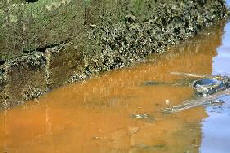|
At stake is whether the substances remain as priority substances or are classed as more dangerous priority hazardous substances.
Priority substances will face tough restrictions under the directive but will remain in circulation. Priority hazardous substances are to be phased out entirely within 20 years.
Over one-third of the list's 32 substances have already been classed as priority hazardous substances.
Last year, the European Chemicals Bureau said that of five substances from the 11 that it was investigating, only one should be a priority hazardous substance.
For the other six, the commission is awaiting recommendations from research carried out under EU pesticide and biocide legislation. Its proposed classification under that legislation will then be forwarded for adoption by the Council of Ministers and European Parliament.
The commission warned it might overshoot the original deadline when the priority list was adopted last year. Officials say the delay is needed to ensure its proposals are founded on good science. They also stress that approval of the broader water quality package will be required for the final classification to bite.
Firms that produce the substances in question disagree. Rocky Rowe of Dow Agrosciences, which produces two substances under review - pesticides Chlorpyrifos and Trifluralin - said the delay was disrupting business planning.
"We can't do anything until we know what that proposal is," he told reporters today.
The delay also complicates Dow's legal action against the European Union, in which the firm is trying to overturn the inclusion of the substances on the priority list in the first place. If the commission decides they should remain as priority substances - and therefore not subject to an eventual phaseout - it could be tempted to drop the case.
{Published in cooperation with ENDS Environment Daily, Europe's choice for environmental news. Environmental Data Services Ltd, London. Email: envdaily@ends.co.uk}
Top
|
